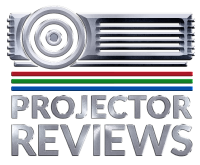- Classroom Projector Report: Best School Projectors for K-12 Education - 2012
- Classroom Projector Report: Best School Projectors for K-12 Education-2
- Classroom Projector Report: Best School Projectors for K-12 Education-3
- Classroom Projector Report: Best School Projectors for K-12 Education-4
- Classroom Projector Report: Best School Projectors for K-12 Education-5
- Classroom Projector Report: Best School Projectors for K-12 Education-6
- Classroom Projector Report: Best School Projectors for K-12 Education-7
- Classroom Projector Report: Best School Projectors for K-12 Education-8
- Classroom Projector Report: Best School Projectors for K-12 Education-9
- Guide to the Classroom Projector Report for K-12 Education
- Guide to the Classroom Projector Report for K-12 Education-2
- Guide to the Classroom Projector Report for K-12 Education-3
- Guide to the Classroom Projector Report for K-12 Education-4
- Guide to the Classroom Projector Report for K-12 Education-6
- Guide to the Classroom Projector Report for K-12 Education-7
- Special Projector Features
- Special Projector Features-3
- Special Projector Features-2
- Special Projector Features-4
- Special Projector Features-5
- Special Projector Features-6
- Classroom Projector Report: Awards For Best School Projector
- Classroom Projector Report: Awards For Best School Projector-3
- Classroom Projector Report: Awards For Best School Projector-2
- Outstanding Product Of The Year: Epson BrightLink 450wi Interactive Projector-2
- Outstanding Product Of The Year: Epson BrightLink 450wi Interactive Projector
- Classroom Projector Report - Physical Tour
- Classroom Projector Report - Physical Tour-2
- Classroom Projector Report: Best School Projectors for Education - Image Quality
- Classroom Projector Report: Best School Projectors for Education - Image Quality-2
- Classroom Projector Report: Best School Projectors for Education - Image Quality-3
- Classroom Projector Report: Best K12 School Projectors for Education - Performance
- Classroom Projector Report: Best K12 School Projectors for Education - Performance-2
- Classroom Projector Report: Best K12 School Projectors for Education - Performance-3
- Classroom Projector Report: Best K12 School Projectors for Education - Performance-4
- School Projectors - Warranty and Support
- Classroom Projector Report: Best School Projectors for K-12 Education: Summary
- Home
- All Reviews
- By Category
- By Manufacturer
- Best Projectors
- Best Projectors By Category
- Best Projectors On Amazon
- Best 4K Projectors
- Best Ultra Short Throw Projectors
- Best Laser TVs
- Best Gaming Projectors
- Best Home Theater Projectors
- Best Projectors Under $1,000
- Best Projectors Under $500
- Best Portable Projectors
- Best Outdoor Projectors
- Best Bright Budget-Friendly Outdoor Projectors
- Best Battery Powered Outdoor Projectors
- Best Outdoor Projection Screens
- Industry News
- Reports
- Projector Manufacturers
- Manufacturer Terminology
- Manufacturers
- Recent Articles
- Custom Integration
- Projection Terms
- Projector Manufacturers Categories
- Videos
- Blog
Close
Menu
- All Reviews
- By Category
- By Manufacturer
- Best Projectors By Category
- Best Projectors On Amazon
- Best 4K Projectors
- Best Ultra Short Throw Projectors
- Best Laser TVs
- Best Gaming Projectors
- Best Home Theater Projectors
- Best Projectors Under $1,000
- Best Projectors Under $500
- Best Portable Projectors
- Best Outdoor Projectors
- Best Bright Budget-Friendly Outdoor Projectors
- Best Battery Powered Outdoor Projectors
- Best Outdoor Projection Screens
- Latest News
- Reports & Guides
- Manufacturers
- Articles
- Custom Integration
- Projection Terms
- Blog
close

